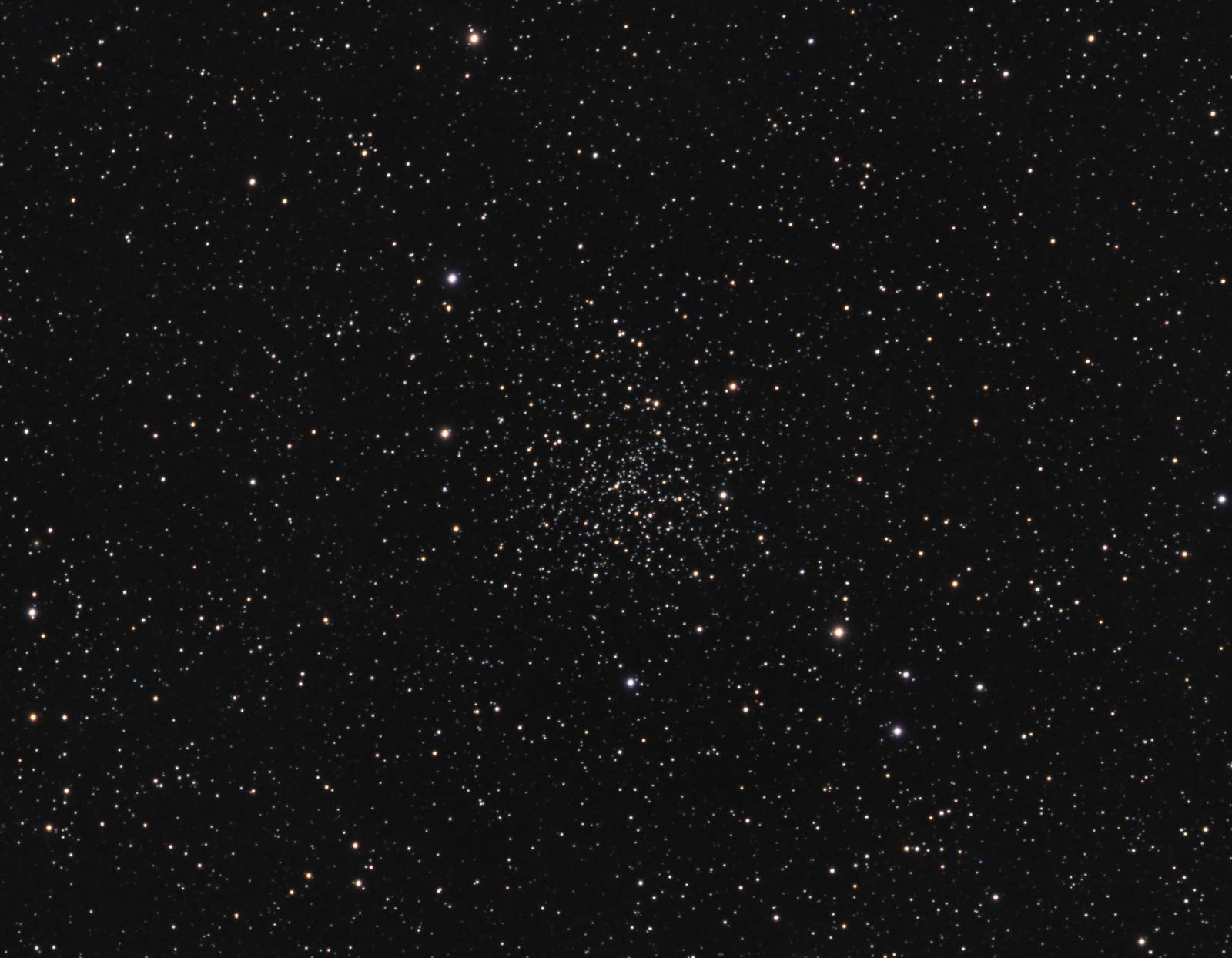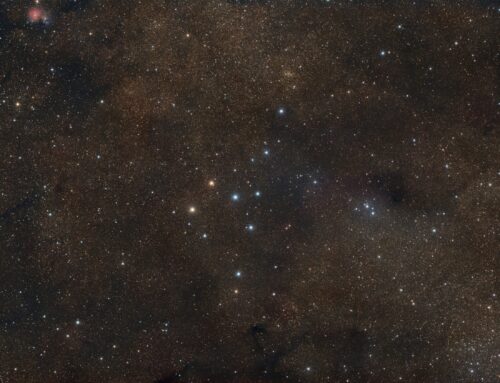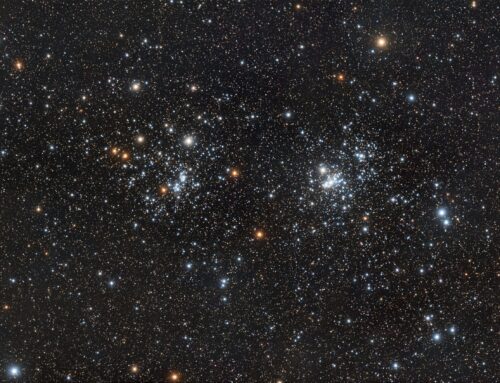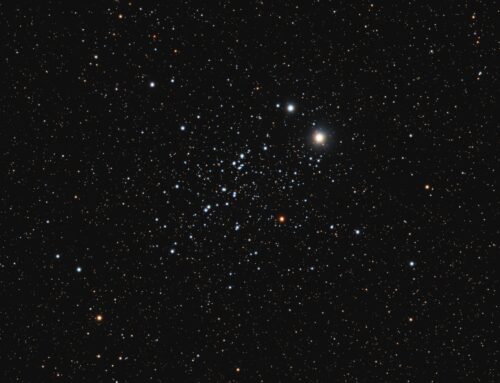Open Cluster NGC 188

Click image for full size version
September 9, 2018
NGC 188 is an open cluster. It was discovered by John Herschel in 1825. It lies in Cepheus and appears about half the width of the Moon. While it may look ordinary, even uninteresting, it’s not your run-of-the-mill open cluster.
For starters, it is the most northern open cluster visible from Earth, lying around 4 degrees from Polaris. It’s also one of the oldest known open clusters, with an age of about 5 billion years. This differs from most open clusters that drift apart on time scales of million years. NGC 188 has likely stayed together for so long because it lies far from the galactic plane, where it is insulated from the dispersing effect of the main disk of the Milky Way.
NGC 188 appears quite red compared to much younger clusters like the Pleiades or the Double Cluster. This is also related to its great age: any hot blue stars that were present originally lived fast and died young, leaving NGC 188 looking reddish overall. Another example of a very red cluster (actually appears gold in my image) is Trumpler 5, visible the top of this image of the Cone Nebula.
Tekkies:
Sky-Watcher Esprit 150 f/7 refractor, QHY 16200-A camera, Optolong Ha, O3, L, R, G and B filters, Paramount MX. Acquisition with TheSkyX unguided. Focused with TheSkyX @Focus3. Automation with CCDCommander. All pre-processing and processing in PixInsight. Acquired from my SkyShed in Guelph. Moderate moonlight, average transparency and average seeing. Data acquired September 1-3, 2018.
6x10m R, 7x10m G and 6x10m B (Total = 3hr10m).
Data Reduction and Cleanup
The BatchPreProcessing script was used to perform calibration, cosmetic correction and registration of all frames. ImageIntegration was used to make the R, G and B masters. DynamicCrop was used to crop all the masters identically. DynamicBackgroundExtraction was applied to each master.
RGB Creation and Processing
Creation and cleanup: ChannelCombination was used to make a color image from the R, G and B masters. The RGB image was processed with PhotometricColorCalibration using a small preview of background sky as the background reference.
Linear Noise Reduction: MultiscaleLinearTransform was used to reduce noise in the RGB image. An internal mask was used, with layer settings for threshold and strength as follows: Layer 1: 3, 0.75 Layer 2: 2, 0.6 Layer 3: 2, 0.5.
Stretching: HistogramTransformation was applied to the RGB image to make a pleasing, bright image.
Synthetic Luminance
Creation and cleanup of SynthL: The R, G and B masters were combined using ImageIntegration (average, additive with scaling, noise evaluation, iterative K-sigma / biweight midvariance, no pixel rejection).
Linear Noise Reduction: MultiscaleLinearTransform was used to reduce noise in the SynthL image. An internal mask was used, with layer settings for threshold and strength as follows: Layer 1: 3, 0.7 Layer 2: 2, 0.5 Layer 3: 2, 0.45.
Stretching: HistogramTransformation was applied to the SynthL to make a pleasing, bright image.
Combining SynthL and RGB
The processed SynthL was applied to the RGB image using LRGBCombine.
Additional Processing
Nonlinear Noise Reduction: TGVDenoise was used in L*a*b* mode to reduce noise in the background areas.
Sharpening: Using a mask to protect star cores and background, MultiscaleLinearTransform was used to sharpen Layers 2 and 3 (strengths of 0.05 and 0.04, respectively).
Final Steps: Background and star brightness, contrast and saturation were adjusted in several iterations using Curves with masks as required. Star sizes were slightly reduced using MorphologicalTransformation’s Morphological Selection tool (selection 0.17, strength 0.2, 3 iterations).
Image scale is about 1.15 arcsec per pixel for this camera/telescope combination.






Leave A Comment